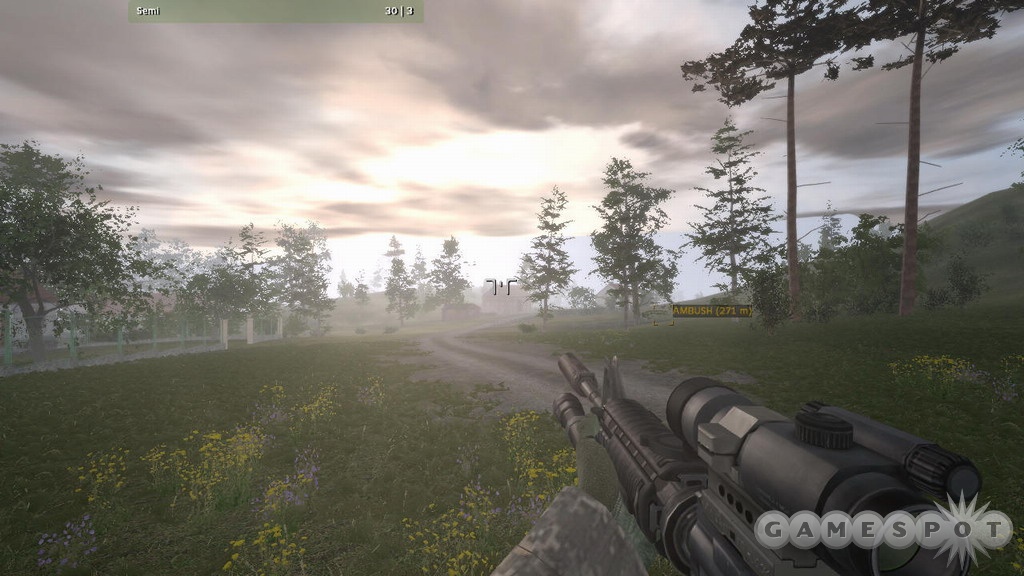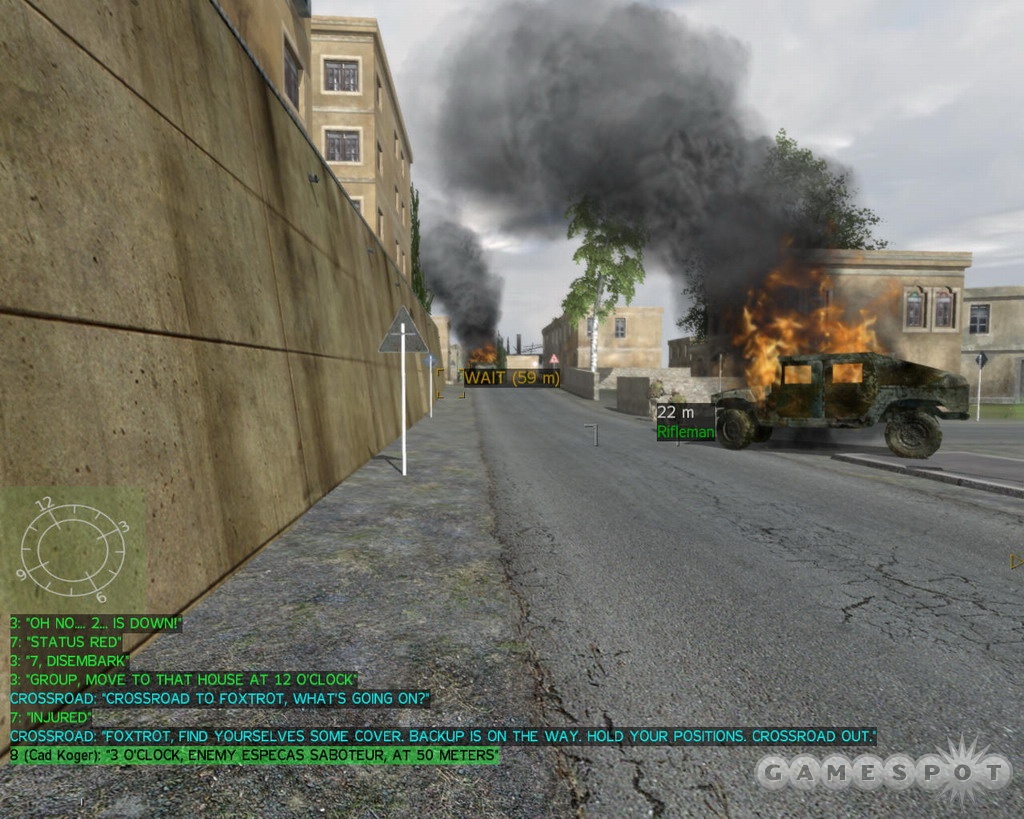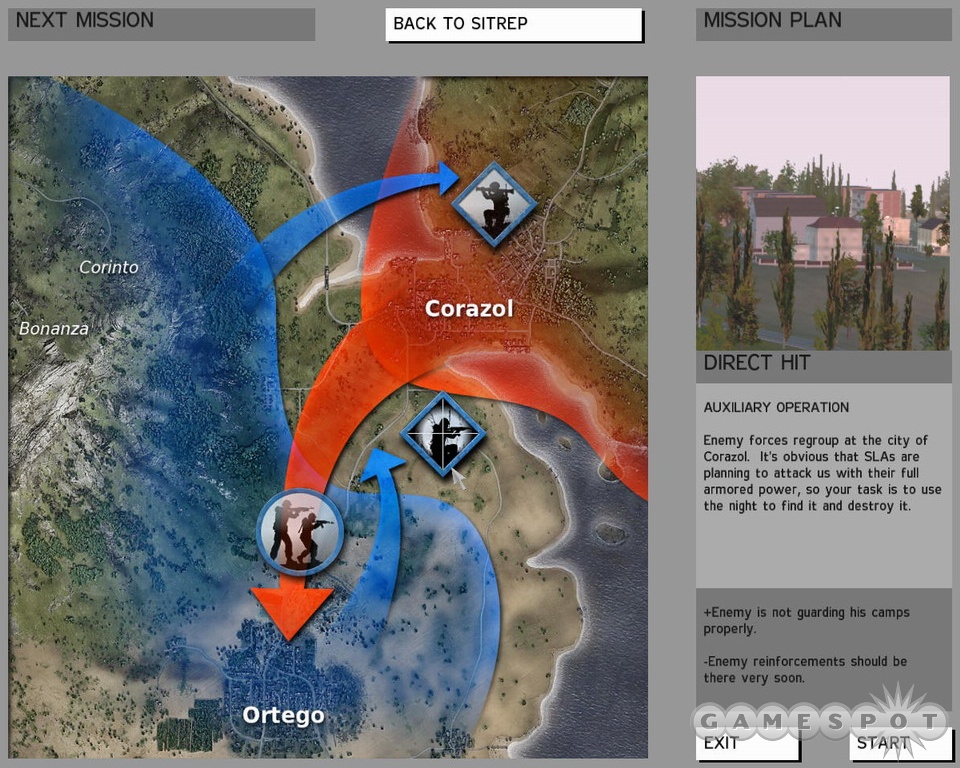ArmA: Combat Operations Hands-On
Bohemia Interactive, the developer of 2001's innovative Operation Flashpoint, is close to finally delivering its long-awaited follow-up game.
In 2001, Codemasters and Bohemia Interactive delivered Operation Flashpoint: Cold War Crisis, an innovative and engrossing tactical shooter that featured a gigantic virtual world and a huge variety of tactical gameplay. Flashpoint was unlike any game that had come before it and did well enough for two expansion packs to be released before work on Operation Flashpoint 2 began. But then the two companies divorced and went their separate ways. Now Codemasters is working on Operation Flashpoint 2 on its own, while Bohemia Interactive took its existing work and renamed it ArmA: Combat Operation.
Like Flashpoint, ArmA could probably best be described as more of a first-person simulation than a first-person shooter. The difference is huge. Most standard shooters feature predetermined linear paths with heavily scripted sequences. In other words, the gameplay is exactly the same every time you play. In ArmA, you're put on a 400 square kilometer island, and as a result, you can approach any tactical situation the way you want. For instance, if you're required to attack a town, you could try a frontal assault or swing around and try to sneak up from any direction. ArmA not only features infantry combat, but also vehicular combat. It won't be unusual if you have to climb into a transport, truck, or tank and drive along country roads to get from one town to another. There's even air combat, which comes in the form of helicopters and fixed-wing aircraft.

ArmA features a plot that's similar to that of Flashpoint, and it's full of allusions to Cold War hot spots, such as West and East Germany and North and South Korea. The game is set on the fictional Atlantic island of Sahrani. The southern part of the island belongs to the Kingdom of South Sahrani, a friend of America and the West, while the northern part of the island belongs to the communist-aligned Northern Democratic Republic of Sahrani. It doesn't take long before war breaks out on the island, and you'll play from the perspective of American soldiers assigned to help defend South Sahrani. This involves conducting various missions that run the gamut of military operations.
There are a number of interesting aspects to the game's campaign, which can stretch over 20 missions in length. After the opening battle--which has you trying to survive a surprise ambush while on patrol and escaping from the invading forces--you'll be presented with a campaign map that gives you a choice between main and auxiliary operations. Main operations are required to continue the story and campaign, but auxiliary operations are voluntary and can be skipped. However, pursuing an auxiliary operation not only lengthens your campaign, but can also make the main operations a bit easier.
For instance, after surviving the ambush, your first main operation will be to defend a key city from northern attack, facing both infantry and armor. There are two auxiliary operations that can make this job a bit easier. One involves a night infiltration mission where you're dropped off solo by boat behind enemy lines, armed with a silenced rifle and an antitank rocket launcher. You have to sneak up to the enemy camp and destroy as much armor as possible. The second auxiliary mission is a sniping mission. You'll be dropped off next to a water tower and position yourself atop it. Mines are laid on a nearby roadway, and when an enemy convoy hits the mines and stops, the infantry will dismount. Your job is to take out the grunts. Accomplishing either mission will reduce the number of enemies that participate in the main attack.

ArmA is the kind of realistic tactical shooter where a single bullet can easily (and often) kill you. This will probably be frustrating to players who are used absorbing lots of damage and healing up instantly by picking up a med kit. This forces you to use cover and to think things through, rather than act rashly and get killed quickly. Thankfully, ArmA gives you a single quick-save slot that you can use as much as you want, which is a huge improvement over Operation Flashpoint's save system. That game only gave you a single save per mission, which caused endless amounts of frustration because once you saved the game during a mission, you couldn't save again.
The weapons modeling in ArmA is challenging, but you can get a lot of practice in the tutorial mode on the rifle range. Using the iron sights on a weapon is absolutely necessary if you want to hit anything farther than 10 feet away, and most engagements in the game take place at long distances. Dropping to a knee or going prone is also necessary to stabilize your aim and minimize your profile to enemy fire. Because the game has a modern-day setting, you'll have access to a wide variety of real-world military equipment, including M-16 rifles, M1 tanks, Black Hawk helicopters, and even newer Stryker combat vehicles. The attention to detail is impressive because you also have gear, such as night-vision goggles and smoke grenades. In fact, when calling in helicopter transport, you have to mark your location with the proper colored-smoke grenade.
The visuals in ArmA are a lot sharper than in Flashpoint, but the graphics still feel more functional than fancy, and seem to lack a lot of the high-end lighting and shader effects seen in modern shooters, as well as higher-end animations. The audio in the preview version we played also sounds straight out of Flashpoint--battle chatter seems to sound less like actual soldiers and more like automated voice systems. The version of the game we played ties the audio together with a heavy metal soundtrack.

Despite the lackluster production values, ArmA can feel incredibly immersive at times. During a major battle, we engaged enemy infantry using an M249 squad automatic weapon while our squadmates, controlled by artificial intelligence, opened up with antitank missiles and rifles. The resulting battle was intense because vehicles on both sides exploded and men were cut down by bullets. Then, after defeating that attack, the squad jumped into an armored personnel carrier and raced off to another part of the battlefield where the enemy was close to breaking through, which resulted in another intense battle with chaos erupting around you. The lethality of bullets makes you want to keep your head down, and there's not a lot of room for heroics, so you end up feeling like part of a team rather than the do-it-all supersoldier as in most other games.
In addition to the single-player campaign, you can play separate missions in single-player. Meanwhile, ArmA's multiplayer suite is about as comprehensive as in Flashpoint, and there's something here for everyone, from team deathmatch to cooperative gameplay modes. Finally, the game will also come with a built-in editor, which will let you create your own missions. When you put it all together, there's no mistaking that ArmA is the spiritual heir to Operation Flashpoint. ArmA ships next month.
Got a news tip or want to contact us directly? Email news@gamespot.com
Join the conversation